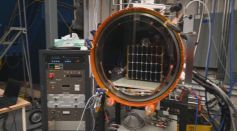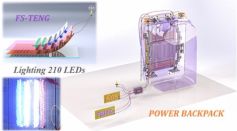ENERGY

Extraordinary Energy Production methods of Biofuel Companies

Understanding The UK Wholesale Energy Market

Energy From Space Could Soon Be Beamed Anywhere in the World Using the Space-Based Solar Panel
Could Scientists Have Finally Discovered What Happened to Amelia Earhart?

Rhode Island Energy Producer, Green Development, Explains How Wind Energy Works
Commercial Carbon Capture and Use, Taking One Step Ahead with Leading Companies in the Industry
Pee Bacteria, a Game Changer in the Production of Electricity

Denmark Artificial Island Project: World’s First-Ever Clean Energy Hub

New Technology Utilizes Hybrid Concentration of Solar Heating and Radiative Cooling
Living Near Artificial Night Lights Increases Risks of Thyroid Cancer

Load-Reducing Backpack Harness Mechanical Energy From Walking To Power Electronics
Penn State, QorTek Fabricates Piezoelectric Device Still Effective in High Temperatures

Will This Energy-Saving Transparent Wood Replace Your Typical Glass?

Arranged Nanoblocks Help Improve Solar Cell Efficiency
Most Popular

If the Sun Were a Basketball, How Big Would the Earth Be? Space Scale Comparison Perfect for Kids

10 Powerful Brain-Boosting Foods Backed by Nutrition Science to Enhance Cognitive Function

Top 10 Invasive Species List: Shocking Biodiversity Threats Ravaging Ecosystems Worldwide

12 Common Brain Myths Debunked: Surprising Neuroscience Facts You Need to Know





